Results 10,371 to 10,380 of 12096
Thread: Anandtech News
-
02-26-20, 07:17 AM #10371
Anandtech: Sapphire Announces Two 4x4 AMD Ryzen Embedded Motherboards
Sapphire has introduced two new miniature motherboards based on AMD’s Ryzen Embedded V1000/R1000 APUs. The new platforms are designed for the most compact highly-integrated machines for industrial and commercial applications.
Sapphire’s NP-FP5 and BP-FP5 compact motherboards feature a 4x4-inch footprint and are based on AMD’s Ryzen Embedded V1000 or R1000 APUs, which offer up to four Zen cores, an integrated Radeon Vega GPU, and a TDP of up to 25 W. The actively cooled systems support up to 32 GB of DDR4-2400 memory using two SO-DIMMs, feature one M.2 slot for an SSD with a PCIe 3.0 x4 or SATA interface, and one M.2-2230 slot for a Wi-Fi module.
The basic NP-FP5 supports two display outputs (using two mDP 1.4 connectors), one GbE port, and two USB 3.1 connectors (other USB ports can be supported using headers). Meanwhile, the more advanced BP-FP5 also has one SATA 6 Gbps + a SATA power connector, three display outputs (using two DP 1.4 and an HDMI connector), two USB 3.1 ports, two GbE connectors, one header for a RS232/422/485 port and Infineon’s SLB9670 TPM 2.0 on board.
One of the first systems that will use Sapphire’s BP-FP5 and NP-FP5 compact motherboards will be SimpleNUC’s Post Oak (with AMD Ryzen Embedded V1605B or R1606G APU) and Red Oak (AMD Ryzen Embedded R1505G or R1305G APU) UCFF PCs. The company will be offering PCs in various configurations to meet different price and performance targets.
Related Reading:Sapphire's 4x4 Motherboards w/AMD Ryzen Embedded V1000/R1000 APUs NP-FP5 BP-FP5 APU
(Soldered Down)AMD Ryzen Embedded V1000/R1000 with up to four AMD Zen cores Graphics AMD Radeon Vega (integrated) Display Outputs 2 × Mini DisplayPort 1.4 2 × DisplayPort 1.4
1 × HDMI 2.0Memory 2 × DDR4 SO-DIMM slots for up to 32 GB of DDR4-2400 SDRAM Ethernet 1 × GbE 2 × GbE Storage 1 × M.2-2242/2260 (PCIe 3.0 x4 or SATA) 1 × M.2-2242/2280 (PCIe 3.0 x4 or SATA)
1 × SATA 6 Gbps + SATA PowerAudio 3.5-mm combo audio jack USB 1 × USB 3.1 Type-A (front)
2 × USB 3.1 Type-A (back)
internal headers2 × USB 2.0 Type-A (front)
2 × USB 3.1 Type-A (front)
2 × USB 3.1 Type-A (back)
internal headersSerial Port - 1 × RS232/422/485 header Wi-Fi M.2-2230 slot TPM - Infineon SLB9670 TPM2.0 on board Form-Factor 4 inch × 4 inch
- Sapphire Unveils FS-FP5V: AMD Ryzen Embedded Mini-STX Motherboard
- Ryzen UCFF-palooza: Multiple PC Makers Now Shipping AMD Ryzen Embedded Systems
- SimplyNUC Unveils Sequoia: AMD Ryzen V-Series-Based UCFF PC
Source: Sapphire
More...
-
02-26-20, 09:14 AM #10372
Anandtech: A Custom Loop LCS for a Compact PC? Corsair Floats Hydro X XD3 Pump/Reserv
Corsair has unveiled its new Hydro X XD3 RGB pump/reservoir combo, which is designed for building ultra-compact custom loop liquid cooling systems for smaller enthusiast-class PCs. As SFF gaming rigs are getting rather popular these days, Corsair’s pump/reservoir is poised to become a success among the target audience.
The Corsair Hydro X series XD3 RGB pump/reservoir combo measures 114 mm × 114 mm × 58 mm, allowing it to fit easily into many form-factor PC cases, such as Corsair’s own 280X. The device uses the Xylem DDC 3.2 PWM9 pump and includes standard G1/4-inch BSPP ports, a 180 ml reservoir, an integrated temperature sensor that measures coolant temperatures and allows automatic cooling control when working with an iCUE Commander Pro controller.
The XD3 device can be paired with Corsair’s CPU and GPU water blocks as well as various radiators (preferably compact ones). Like other pieces of hardware for enthusiasts from the company, the XD3 pump/reservoir has 16 addressable RGB LEDs that can be controlled using Corsair’s iCUE software.
Corsair’s Hydro X series XD3 RGB pump/reservoir combo will be available shortly. Corsair has not announced pricing at this time.
Related Reading:
- The Corsair Hydro X Custom Water Cooling Review, on a Ryzen 9 3950X
- Corsair's Hydro X: Making Custom Loop Water Cooling More Mainstream
- Corsair Unveils New iCUE RGB Pro XT Liquid CPU Coolers: 240, 280 & 360mm
- Corsair Announces Crystal 280X RGB Case: Micro-ATX
Source: Corsair
More...
-
02-26-20, 11:27 AM #10373
Anandtech: The MSI Creator TRX40 Motherboard Review: The $700 Flagship for Threadripp
The TRX40 chipset is designed to support all the current generation AMD Ryzen Threadripper processors including the 3990X which has 64-cores and 128-threads of processing power. On the test bench today is the MSI Creator TRX40 which is its current top-tier offering with a high-end feature set including four full-length PCIe 4.0 slots and supports up to three PCIe 4.0 x4 M.2 drives. With a feature set led by an Aquantia AQC107 10 gigabit Ethernet controller, and an Intel AX200 Wi-Fi 6 wireless adapter, MSI opts for a more content creator and professional theme for its flagship.
More...
-
02-26-20, 01:46 PM #10374
Anandtech: LG’s V60 ThinkQ 5G Debuts: 6.8-Inch Display, Snapdragon 865, 8 GB RAM
Although Mobile World Congress has been cancelled, companies still have their product cycles and have to reveal new devices ahead of launch in the coming months. LG today announced its new high-end smartphone, the V60 ThinQ 5G, which is based on Qualcomm’s newest flagship platform, features a new camera setup, and has one of the largest displays on the market.
As one would expect from a premium 2020 Google Android smartphone, the LG V60 ThinQ 5G is powered by Qualcomm’s Snapdragon 865 SoC alongside the Snapdragon X55 modem as well as the FastConnect 6800 subsystem that supports Wi-Fi 6. Meanwhile, the device also has 8 GB of LPDDR5 RAM as well as 128 GB of NAND flash storage (expandable with a microSD card).
The LG V60 ThinQ 5G comes equipped with a 6.8-inch FullVision P-OLED display featuring a 2460×1080 resolution along with a 20.5:9 aspect ratio (which reminds us of Sony’s Xperia 1 with its distinguished 21:9 screen), one of the largest smartphone display around as far as high-end handsets are concerned. It's a bit odd to see LG use a lower resolution screen than the V50 last year, even at such a large device size and certainly won't be optimal for some users.
Meanwhile, for those who feel that one monitor is not enough, LG will offer a new Dual Screen accessory (featuring a similar size and resolution) for the new phone.
One of the key improvements that the LG V60 ThinQ 5G has over its predecessor is without any doubts its new main camera setup comprising of a 64 MP main sensor, a 13 MP module with a 117º super-wide-angle lens, a 3D time-of-flight (ToF) sensor, and a dual-LED flash. The main camera supports 8K (and 4K60) with HDR10+ video recording, along with various modes to make proper photographs in various conditions. On the front, the smartphone has a 10 MP camera housed inside a dewdrop notch design.
On the audio side of matters, the LG V60 ThinQ 5G comes equipped with stereo speakers, 32-bit quad DACs, and a quad-microphone array. Meanwhile the handset has a 3.5-mm audio jack, making this one of the last Android flagships with the feature, as well as a dedicated Google Assistant button.
Yet another prominent advantage of the new V60 ThinQ 5G is its massive 5000 mAh battery that promises a 21-hour talk time as well as a 590-hour standby time on one charge. The battery can be charged using a Qi wireless charger supporting Qualcomm’s Quick Charge 4.0+ or a USB-C wired charger.
Traditionally for numerous modern high-end handsets, the LG V60 ThinQ 5G features an aluminum frame with Corning’s Gorilla Glass 5 on the front as well as Gorilla Glass 6 on the back. Meanwhile, the device is MIL-STD-810G tested as well as IP68 dust and water resistant (up to 1.5 meters for up to 30 minutes). The product weighs a quite heavy 219 grams (7.72 ounces) and will be available in Classy Blue as well as Classy White finishes.
Other notable hardware features of LG’s latest smartphone are Bluetooth 5.1, an under-display fingerprint reader, and a host of sensors.
The LG V60 ThinQ 5G will be available from AT&T, T-Mobile, U.S. Cellular, and Verizon in the coming weeks. Pricing is something that has yet to be disclosed.LG V60 ThinQ 5G V60 SoC Qualcomm Snapdragon 865
1x Cortex A77 @ 2.84GHz
512KB pL2
3x Cortex A77 @ 2.42GHz
3x 256KB pL2
4x Cortex A55 @ 1.80GHz
4x 128KB pL2
4MB sL3GPU Adreno 650 @ 587 MHz DRAM 8 GB Storage 128 GB
+microSDDisplay 6.8" FullVision AMOLED
2460 x 1080 (19.5:9)Size Height 169.3 mm Width 77.6 mm Depth 8.9 mm Weight 218 grams (7.69 ounces) Battery Capacity 5000 mAh (Typical) Wireless Charging Qi Rear Cameras Main 64 MP 1/7" 0.8µm
f/1.8 w/OISWide 13 MP 1/3.4" 1µm
f/1.9
117° super-wide angleToF HQVGA 1/4" 14µm
f/1.9
117° super-wide angleFront Camera 10 MP 1/3.1" 1.22μm
f/1.9I/O USB 2.0 Type-C
Fingerprint readerWireless (local) Wi-Fi 6
Bluetooth 5.1Cellular GSM, CDMA, HSPA, 4G/LTE, 5G Splash, Water, Dust Resistance IP68 Dual-SIM nano-SIM Launch OS Android 10 Launch Price ?
Related Reading:
- Sony Announces New Xperia 1 II Flagship, Teases Xperia PRO
- Samsung Announces The Galaxy S20, S20+ and S20 Ultra: 120Hz, 5G, Huge Batteries, Crazy Cameras and $$$
- First with Snapdragon 865: ZTE Unveils Axon 10s Pro w/ 5G, 6.47-Inch AMOLED, 12 GB LPDDR5
- The Snapdragon 865 Performance Preview: Setting the Stage for Flagship Android 2020
- The LG G8 Review: Solid, But Not Great
- LG Announces The New G8 & V50 5G ThinQ
Source: LG
More...
-
02-26-20, 03:46 PM #10375
Anandtech: NZXT Debuts H1 Mini-ITX Case for Big Gaming Rigs & NZXT BLD H1 Mini PC
Small form-factor gaming PCs are on the rise these days, but because leading-edge components like CPUs and GPUs tend to produce a lot of heat and therefore require bulky cooling systems, it is not easy to build a truly compact PC with top-of-the-range components. Some makers of chassis attempt to design compact cases for gaming desktops, and this week NZXT introduced its Mini-ITX case for systems with leading-edge hardware. Alongside the Mini-ITX case, the company also unveiled its NZXT BLD H1 Mini PC that packs Intel’s Core i9-9900K and NVIDIA’s GeForce RTX 2070 Super.
The NZXT H1 Mini-ITX case is dual-chamber 13.6-liter vertical chassis made of stainless steel and tempered glass that can house a Mini-ITX motherboard, an up to 305-mm long 2.5-wide graphics card, and two 2.5-inch storage devices. The case measures 187 mm × 387.7 mm × 187.6 mm, which is a little bit larger than one comes to expect from a Mini-ITX chassis, but which is still considerably more compact than almost any Micro-ATX case. The chassis has air intakes on two sides out of four, to ensure proper cooling for the internal hardware.
NZXT’s H1 comes with a pre-installed 140-mm closed-loop CPU liquid cooling system, a PCIe 3.0 x16 riser card, filters on air intakes, and a 650 W SFX-L 80 Plus modular PSU. The upper panel has a USB Type-A and a USB Type-C connector as well as a 3.5-mm combo audio jack. As the case — set to be available in black or white — is stuffed by default with a PSU and a cooler, the product will retail for a higher $349 price.
In addition to the case itself, NZXT will offer its pre-built BLD H1 Mini PC that is based on Intel’s Core i9-9900K CPU as well as NVIDIA’s GeForce RTX 2070 Super Founder’s Edition graphics card. The system uses the ASUS ROG Strix Z390-I motherboard and is equipped with Team Group’s 16 GB of DDR4-3200 memory, and Intel’s 1 TB 660p SSD. The system costs $1,999.
Related Reading:
- NZXT Unveils Kraken X-3 and Kraken Z-3 Series Closed-Loop CPU Coolers
- NZXT Releases C-Series PSUs: 80Plus Gold and up to 850W, Built By Seasonic
- NZXT Refreshes H Series, New H510 Elite Chassis With RGB
- CES 2020: ASUS Unveils ROG Z11 Mini ITX Chassis For Gamers
- ASUS ROG Strix X570-I Gaming Mini-ITX Motherboard: Wi-Fi 6, Dual PCIe 4.0 M.2
- ZADAK Demonstrates MOAB: "World’s First Portable Water-Cooled PC"
Source: NZXT
More...
-
02-27-20, 04:22 AM #10376
Anandtech: 2011 is Calling: Biostar Relaunches H61 Chipset in 2020
Almost a decade ago, with the launch of Intel’s Sandy Bridge processors, came the H61 chipset. Compared to the high-end P67 and Z68 models, the idea behind H61 is that it was cheap, and it was long-life. At a time when low power embedded Atom CPUs still didn’t have enough power, H61 was there to be equipped with one of Intel’s new-fangled Core processors, with the systems that designed for it destined to last a couple of decades. We’re now 9 years into that life cycle, and Biostar deems it necessary to create a new H61 design for the new decade.
We’re getting to a time now where the cheaply made H61 boards of yesteryear are starting to go pop. When you save a tenth of a cent on capacitors, eventually you get to an age where one doesn’t work and the magic smoke appears. Systems which are built on these have two options: replace the failed component, or upgrade completely. What may surprise some people is that the easiest option is always the first one: replace the broken component. By replacing hardware like-for-like, the system is already set up and ready to go when the new part is installed. If a customer decided to go a different route with a Gemini Lake, sure there might be more performance, but then the signalling standards have changed, the memory has changed, the capabilities of the CPU have changed, etc.
By introducing its new H61 motherboard into the mix, the H61MHV2, Biostar is hoping to capitalize on a decade of experience with newer high performance motherboards, and the ability to play the supply chain for the best deals. As a result of a decade of advancement, elements such as the Ethernet have been updated – up from a 100 Mbps chip to a 1 Gbps chip. DDR3-1600 slots are now in line with the rear IO panel to help airflow, and the socket has changed orientation as well. We should expect to see a few updates perhaps in the BIOS and software as well.
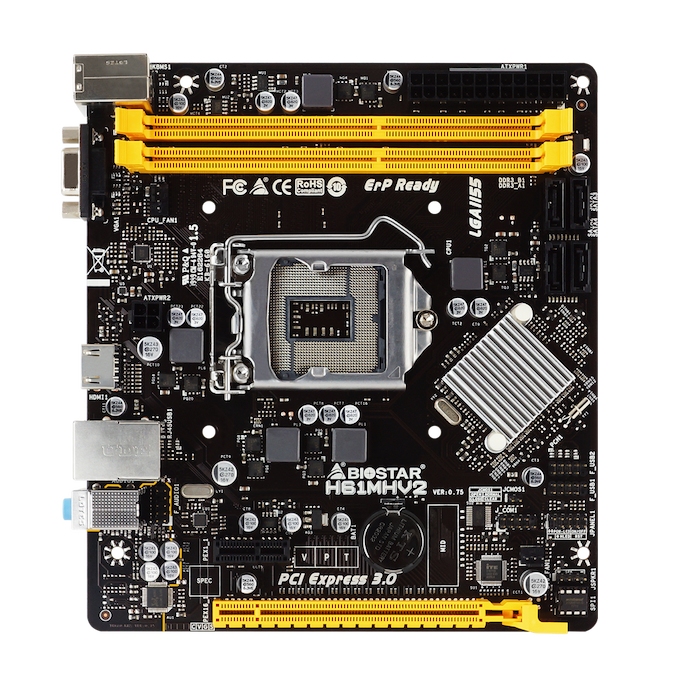
The Biostar H61MHV2 doesn’t quite meet the strict requirements for a mini-ITX board, being one slot longer – presumably for those customers that need the extra PCIe x1 slot. The main PCIe slot is actually PCIe 3.0 x16, but only when a Core i5 or Core i7 Ivy Bridge processor is used. This motherboard supposedly supports all the way up to the Core i7-3770K.
The SATA ports are only SATA 3 Gbps, half the speed of modern SATA connections, and there are no USB 3.0 ports here. Audio is the simplest Realtek ALC662 chip that money can buy, and the same one used by the Biostar IH61MF-Q5, which the company states is what this new board is replacing. Over the IH61MF-Q5, the only spec-sheet difference between the two seems to be the HDMI output, as well as support for Windows 10. In a visual inspection between the two, we can see some of the layout has changed as well.
Users buying this new H61 board, we expect, are just going to be replacing their original $50 designs with something similar. However kudos to anyone building a new system with it. 2011 was the year that William and Kate got married, Steve Jobs passed, and Thailand got flooded so a lot of PC components got more expensive. Hopefully 2020 isn’t a repeat of similar news.
We have asked Biostar’s PR agency for pricing, and will update the article when we get it.
Related Reading- BIOSTAR Brings Windows 7 To Intel's B365 Platform
- The Biostar A10N-8800E Motherboard Review: Carrizo in 2019?!
- BIOSTAR Adds Windows 7 Support To Some Intel and AMD Motherboards
- The Biostar X470GTN Motherboard Review: AM4 ITX Revisited
- The Biostar X370GTN Mini-ITX Motherboard Review: AM4 Goes Tiny
- Mining Can Be Fashionable? Biostar Wants to Sell Millenials its New iMiner Systems
Gallery: 2011 is Calling: Biostar Relaunches H61 Chipset in 2020


More...
-
02-27-20, 07:22 AM #10377
Anandtech: GlobalFoundries' 22FDX with MRAM is Ready
GlobalFoundries on Thursday said that it had completed development of its 22FDX (22 nm FD-SOI) technology with embedded magnetoresistive non-volatile memory (eMRAM). The technology can be used for a variety of applications, including automotive, industrial-grade MCU, and Internet-of-Things (IOT). Several clients of GlobalFoundries are ready to tape out their first 22FDX chips with eMRAM this year.
eMRAM provides a number of advantages when compared to eFlash (which is widely used today) for chips that need relatively high-capacity onboard storage, including higher performance and endurance, but want it all in a single silicon die. MRAM does not involve electric charges or current flows, instead, it uses magnetic storage elements and relies on reading the magnetic anisotropy (orientation) of two ferromagnetic films separated by a thin barrier. The method does not require an erase cycle before writing data, which means additional performance. Furthermore, MRAM can be produced using modern process technologies and has a very high endurance. The technology has some downsides, which will be eventually addressed by fabrication processes that use ReRAM, but GlobalFoundries and Samsung Foundry see a huge potential in in MRAM for the vast majority of applications.
GlobalFoundries’s says that test chips produced using its 22FDX with eMRAM process technology have demonstrated a 100,000-cycle endurance and a 10-year data retention across the -40°C to 125°C operating temperatures with ECC-off mode. Furthermore, the company’s eMRAM test product can pass standard reliability test, including LTOL (168 hours), HTOL (500 hours), and 5x solder reflows with failure rate < 1 ppm. In addition, GlobalFoundries has addressed concerns about magnetic immunity (of a product that relies on magnetic storage elements). The company says that its test 40 Mb product demonstrated a stand-by magnetic immunity of ~ 600 oersted at 105°C for 10 years (which means no read failures), whereas its active-mode magnetic immunity was ~500 oersted.
GlobalFoundries offers silicon-validated MRAM macros featuring capacities from 4 Mb to 48 Mb that can be used for various designs. At present, the technology has been qualified for AEC-Q100 Grade 2 designs with a -40°C to 105°C temperature range. Next year, the company will offer a version of the process qualified for AEC-Q100 Grade 1 temperatures (-40°C to 125°C).
GlobalFoundries produces chips using its 22FDX technology at its 300-mm Fab 1 in Dresden, Germany. The same production facility will handle production of devices made using the company’s 22FDX with eMRAM.
Mike Hogan, senior vice president and general manager of automotive and industrial multi-market at GlobalFoundries said the following:
“We continue our commitment to differentiate our FDX platform with robust, feature rich solutions that allow our clients to build innovative products for high performance and low power applications. Our differentiated eMRAM, deployed on the industry’s most advanced FDX platform, delivers a unique combination of high performance RF, low power logic and integrated power management in an easy-to-integrate eMRAM solution that enables our clients to deliver a new generation of ultra-low power MCUs and connected IoT applications.”Related Reading- Samsung Ships First Commercial Embedded MRAM (eMRAM) Product
- MRAM Developer Day, GlobalFoundries Keynote Live Blog
- Everspin Begins Production of 1Gb STT-MRAM
- GlobalFoundries Teams Up with Singapore University for ReRAM Project
Source: GlobalFoundries
More...
-
02-27-20, 09:43 AM #10378
Anandtech: ZOTAC Unveils Zbox Magnus EN52060V: A UCFF PC with GeForce RTX 2060 & 2.5
Zotac has quietly added a new mainstream gaming barebones system into its lineup of ultra-compact systems. With its quad-core Intel processor and NVIDIA’s GeForce RTX 2060 graphics card, the new Zbox Magnus EN52060V promises the performance of a mid-range mobile PC for gamers, but at a lower price and with all advantages that a desktop can offer.
The new barebones system comes in ZOTAC’s regular 2.65-liter Zbox Magnus EN chassis, which is just 62.2 mm (2.45 inches) tall. The Zbox Magnus EN52060V UCFF PC barebones is based on Intel’s quad-core Core i5-9300H processor (4C/8T, 2.40 GHz – 4.10 GHz, 45 W) accompanied by NVIDIA’s GeForce RTX 2600 discrete GPU with 6 GB of GDDR6 memory. The system can be equipped with up to 32 GB of DDR4-2600 memory, an M.2-2280 SSD with a PCIe 3.0 x4 or SATA interface, and a 2.5-inch storage device.
The barebones system uses a mobile processor in an FCBGA1440 packaging, so it cannot be upgraded. Meanwhile, it is unclear whether the system uses a soldered-down discrete GPU, or an MXM module that could theoretically be upgraded.
When it comes to connectivity, the Zbox Magnus EN52060V supports a Wi-Fi 6 + Bluetooth 5 adapter, two RJ-45 cores (2.5 GbE + GbE), two USB 3.1 Type-C connectors, four USB 3.0 Type-A ports, four display outputs (a DP 1.4, two HDMI 2.0b, one USB-C), an SD card reader, and two 3.5-mm audio jacks for headphones and a microphone.
ZOTAC already lists its Zbox Magnus EN52060V on its website, so it is reasonable to expect it to become available shortly. As for pricing, while Zotac has not announced anything at this time, based on its specifications we expect that this should end up the cheapest of Zotac's GeForce RTX-equipped Magnus EN-series PCs.ZOTAC's Zbox Magnus EN-Series GeForce RTX Barebones Magnus EN52060V
Zbox-EN52060VCPU Intel Core i5-9300H
4C/8T
2.4 GHz - 4.1 GHz
8 MB
45 WGPU NVIDIA GeForce RTX 2060 Memory 2 × DDR4 SO-DIMM slots
up to 32 GB of DDR4-2600 memoryStorage M.2 M.2 2280 slot for PCIe/SATA SSD DFF 1 × 2.5" SSD/HDD Card Reader SD Wireless Killer 1650 802.11ax Wi-Fi + BT 5 Ethernet 1 × Gigabit Ethernet with RJ45
1 × 2.5 Gigabit Ethernet with RJ45Display Outputs 1 × DisplayPort 1.4
2 × HDMI 2.0b
1 × USB-CAudio 3.5 mm audio-in
3.5 mm audio-outUSB 5 x USB 3.1 Type-A
1 x USB 3.1 Type-CThunderbolt 3 - PSU External OS ? Additional Details Link
Related Reading:
- CES 2020: ZOTAC’s Inspire Studio SFF PCs for Creators w/ 8-Core CPU & GeForce RTX
- ZOTAC Expands MEK Lineup with MEK Mini and MEK Ultra
- Zotac at CES 2018: ZBOX MAGNUS Upgraded with Coffee
Source: ZOTAC (via Hermitage Akihabara)
More...
-
02-27-20, 09:43 AM #10379
Anandtech: Testing a Chinese x86 CPU: A Deep Dive into Zen-based Hygon Dhyana Process
In 2016, through a series of joint ventures and created companies, AMD licensed the design of its first generation Zen x86 processors to be sold into China. The goal of this was two-fold: China wanted a ‘home grown’ solution for high-performance x86 compute, and AMD at the time needed a cash injection. The outcome of this web of businesses was the Hygon Dhyana range of processors, which ranged from commercial to server use. Due to the Zen 1 design on which it was based, it has been assumed that the performance was in line with Ryzen 1000 and Naples EPYC, and no-one in the west has publicly tested the hardware. Thanks to a collaboration with our friend Wendell Wilson over at YouTube channel Level1Techs, we now have the first full review of the Hygon CPUs.
More...
-
02-27-20, 11:08 AM #10380
Anandtech: AMD Launches Ultra-Low-Power Ryzen Embedded APUs: Starting at 6W
While it doesn't get the same attention as their high-profile mobile, desktop, or server CPU offerings, AMD's embedded division is an important fourth platform for the chipmaker. To that end, this week the company is revealing its lowest-power Ryzen processors ever, with a new series of embedded chips that are designed for use in ultra-compact commercial and industrial systems.
The chips in question are the AMD Ryzen Embedded R1102G and the AMD Ryzen Embedded R1305G SoCs. These parts feature a 6 W or a configurable 8 W - 10 W TDP, respectively. Both SoCs feature two Zen cores with or without simultaneous multithreading, AMD Radeon Vega 3 graphics, 1 MB L2 cache, 4 MB L3 cache, a single channel or a dual-channel memory controller, and two 10 GbE ports.
AMD says that a low TDP and reduced number of supported DIMMs (in case of the R1102G) enable system makers to simplify their designs and make them cheaper as compared to machines that run AMD's higher performing and higher TDP Ryzen Embedded processors.AMD Ryzen Embedded R1000-Series APUs AnandTech Cores
ThreadsBase
FreqTurbo
FreqL2 L3 GPU
SPsIGP
FreqDRAM TDP Ryzen Embedded R1606G 2C / 4T 2600 3500 1MB 4MB 192 1200 Dual Channel
with ECC12W - 25W Ryzen Embedded R1505G 2C / 4T 2400 3300 1MB 4MB 192 1000 Dual Channel
with ECC12W - 25W Ryzen Embedded R1305G 2C / 4T 1500 2800 1MB 4MB 192 1000 Dual Channel 8W - 10W Ryzen Embedded R1102G 2C / 2T 1200 2600 1MB 4MB 192 1000 Single Channel with ECC 6W
AMD’s first customers to use the Ryzen Embedded R1102G and the Ryzen Embedded R1305G SoCs will be Kontron, which has a scalable D3713-V/R Mini-ITX platform, and Simply NUC, which has its Red Oak miniature PC. Other makers may get a 4x4 motherboard from Sapphire based on AMD's new Ryzen Embedded R1000-series APUs.
Both ultra-low-power AMD Ryzen Embedded APUs will be available for the next 10 years, meaning availability will stretch all the way till 2030.
Related Reading:
- Sapphire Announces Two 4x4 AMD Ryzen Embedded Motherboards
- Ryzen UCFF-palooza: Multiple PC Makers Now Shipping AMD Ryzen Embedded Systems
- SimplyNUC Unveils Sequoia: AMD Ryzen V-Series-Based UCFF PC
- Sapphire Unveils FS-FP5V: AMD Ryzen Embedded Mini-STX Motherboard
Source: AMD
More...
Thread Information
Users Browsing this Thread
There are currently 30 users browsing this thread. (0 members and 30 guests)




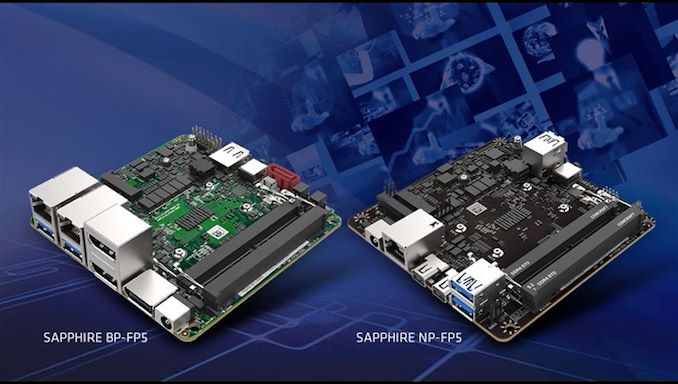



 Quote
Quote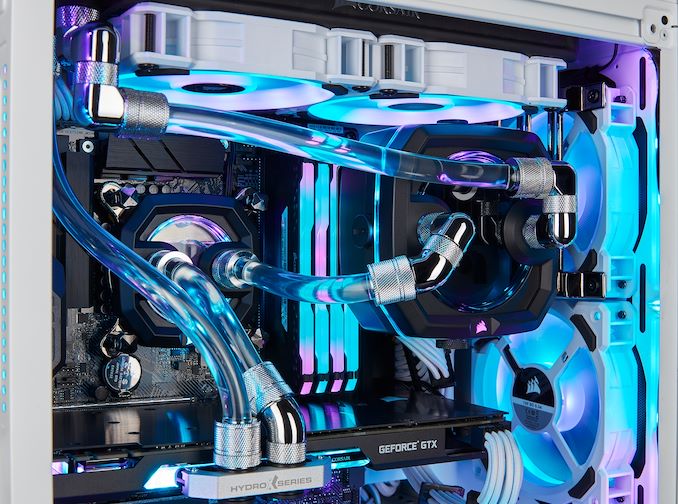

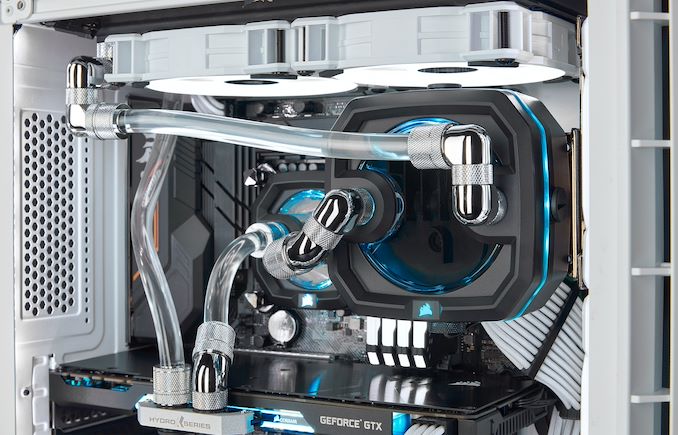


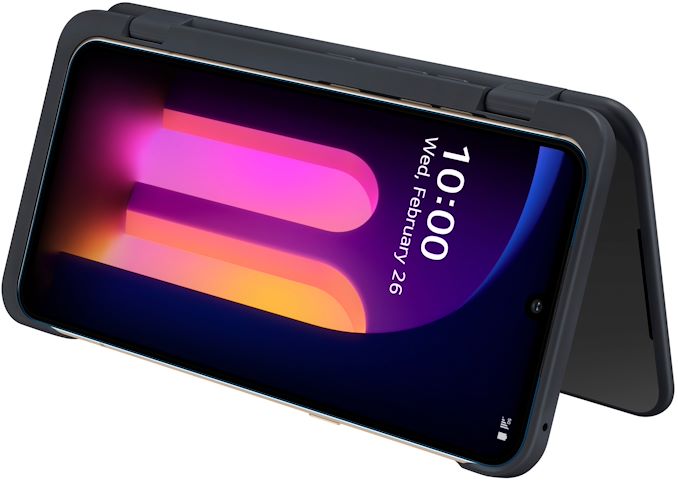



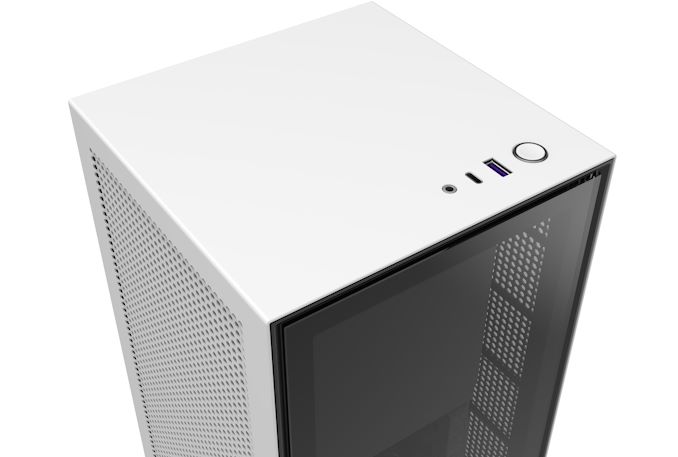
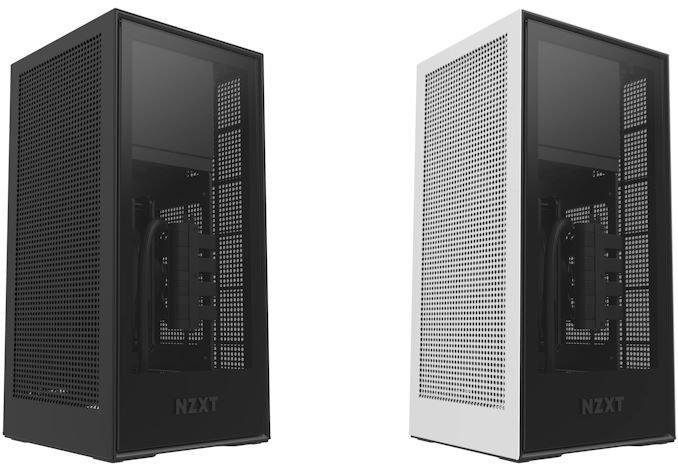
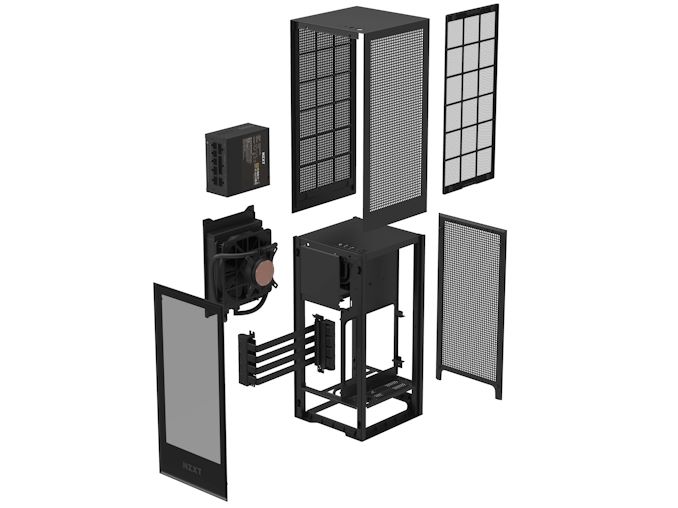

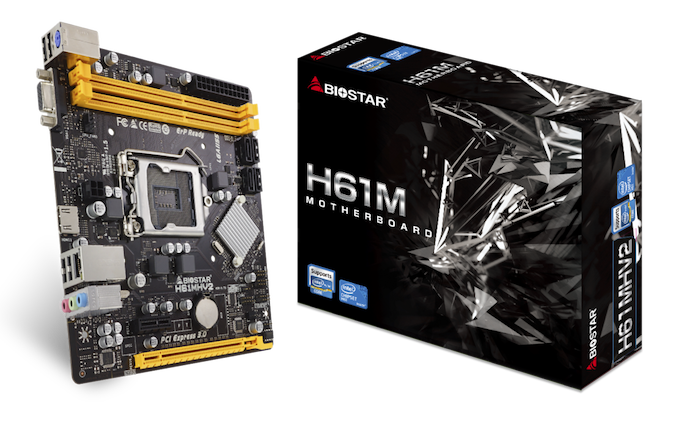

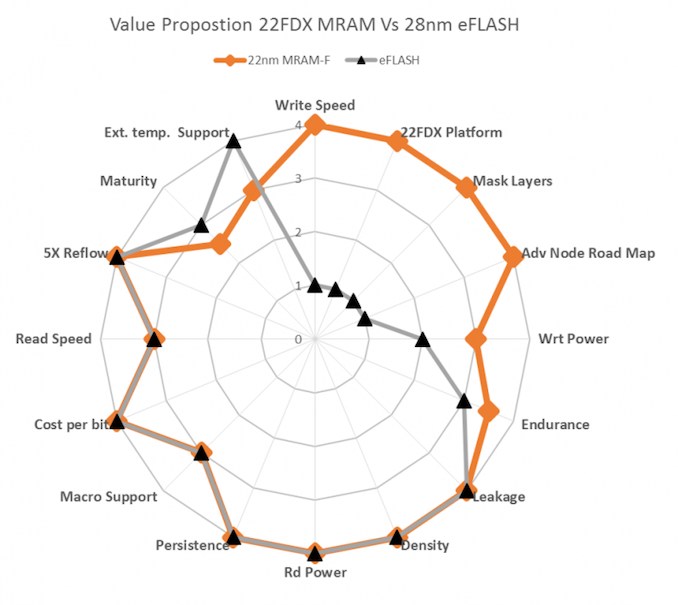
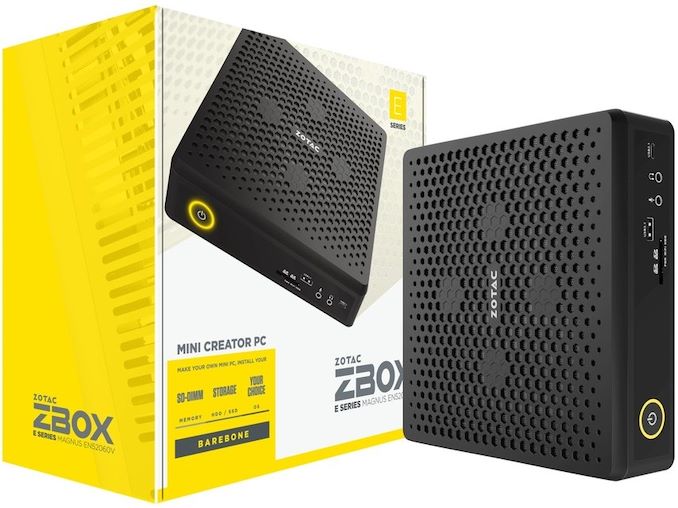
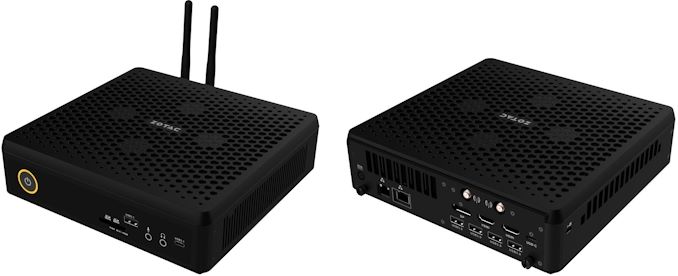

















Bookmarks